What is the Nvidia Shield?
Below are the specs from the Nvidia website:
VIDEO FEATURES: 4K Ultra HD ready, 4K playback at 60 FPS (VP9, H265, H264), 4K capture at 30 FPS (H264, H265)
AUDIO: 7.1 and 5.1 surround sound pass through over HDMI, High-resolution audio playback up to 24-bit/192 kHz over HDMI and USB, High-resolution audio up-sample to 24-bit/192 kHz over USB, Supports: AAC, MP3, OGG Vorbis, FLAC, PCM
STORAGE 16 GB and 500 GB (Note: portion of storage occupied by system software)
WIRELESS 802.11ac 2x2 MIMO 2.4 GHz and 5 GHz Wi-Fi Bluetooth 4.1/BLE
INTERFACES Gigabit Ethernet, HDMI 2.0, Two USB 3.0 (Type A), Micro-USB 2.0, MicroSD slot, IR receiver (compatible with Logitech Harmony)
Why did I buy an Nvidia Shield Android TV?
I do plan to buy a laptop sometime next year, but it will probably be later in the year, so I wanted a 4k source now. After I get a new laptop that has a 4k resolution output, I will just permanently move the Nvidia Shield into my main audio/video setup, and when I upgrade the main HDTV to 4k, I will already have a way to feed it a 4k signal.
How does the Shield’s features compare to the older AppleTVs & the new AppleTV 4?
Other than performance, obviously, you have other features like the ability to plug in headphones to the controller, ability to upgrade memory with microSD cards, ability to attach accessories via USB3 (this comes in handy for Audio if you have a 2 channel USB DAC) and you can also access media via the USB3 ports. Apple does not have those features and Apple does not have a way to increase storage. Luckily, the AppleTV 4 comes with 64GB of memory in their $199 model, while Nvidia only comes with 16GB. However, you can add a 64GB microSD to the Shield for around $20 that will expand your memory to 80GB (there are also 128GB cards available for around $60).
Nvidia has a “pro” model for those that need 500GB of memory for an extra $100, but I bought the 16GB version and added a 64GB card to it. The Nvidia has a nice feature where you can tell it to move all new downloads automatically to the card, so it is somewhat pain free to use external storage.
Sounds great, but what about content?
The Nvidia Shield's content is still in the building phase, as well. It has Plex/Netflix/Kodi/Hulu Plus and others, but it is missing Amazon, Vudu, and HBO right now. Vudu and HBO have already announced they are coming, but you might need a Roku or FireTV if you want Amazon Prime Movies (Note: Amazon is coming out with a 4k@30hz FireTV for $99 in October). Since the Nvidia Shield has the ability to "Sideload" apps, you might be able to get some of the missing apps on the Shield through the "backdoor", but I haven't spent much time researching how to install an app like Amazon Prime Movies. I know some people want one box that does everything, but they will need to research these sideload options themselves. I hesitate to recommend anything based on sideloading because the streaming service provider could block the app after the fact. (Note: I have more about sideloading later in this article).
The upside to the AppleTV is getting access to iTunes and Airplay (especially mirroring). The Shield does have apps that will accept Airplay from Audio (Kodi & AirPin), but I am not aware of a way to mirror iOS to the device. However, the Shield does have Google Casting built in. This allows you to play some content from apps like Vudu using an iPhone to cast content to the Shield. Casting will also mirror from certain Android devices (I have tested it with my cheap Asus 7 Memo and it works).
Over the last year, more and more iOS apps support Casting, so that number should continue to climb. One upside to Casting vs Airplay is that it uses the iOS device as a remote control rather than the receiver and the transmitting source. For example, Pandora is an iOS app that has Casting available. If you Cast to the Shield from an iPhone and get a call, Pandora will continue to play because it sends the source from the internet directly to the Shield. Airplay, for most apps (there are a couple possible exceptions, but Apple hasn't been clear about how or when they work), will send the audio signal to the iPhone and back to the AppleTV. This will typically lead to losing your Pandora streaming when you get a call. It will pick back up when you hang up the call.
I should mention that Casting to the Shield has had glitches compared to using a Chromecast in the past. This may have something to do with iOS9 or it could be the firmware on the Shield. For example, when I Cast Lynda.com videos, it will play for a few minutes and then unexpectedly start the same video over again. This is probably just an issue with Lynda needing to update their app for iOS9, but I can't say for sure.
Gaming
Games are currently available via download, streaming from a computer that has a compatible Nvidia card, or via an online service called “The Grid”. The Grid service is currently in beta, so they are allowing Nvidia users to have free access fro the time being. In one article I read, it said it would go to subscription in September, but that hasn’t happened yet.
As luck would have it, the Grid has a couple fighting games that I like. Street Fighter X Tekken and Ultra Street Fighter IV look great and are a lot of fun to play. I also looked at a few other games and they looked fantastic. Devil May Cry 4, for example, had beautiful graphics. My internet plan streams at 75mbps, so it streamed at 1600x1024 resolution from the web without much problem. I have also played some 1920x1080 games (The Street Fighter Game, as one example) and they also worked without an issue. The nice thing is that many of the games let you set the specs yourself, so if your internet plan isn’t great, you can lower the settings.
If you want to pay for games, which I hesitate to do right now since I can take advantage of the Grid's current free access, there are a lot of great options. Half Life 2: Episode 2, Never Alone, This War of Mine, and more are available for download. Crysis 3 has been rumored to be in the works.
I don’t have a Twitch account, but there are also settings to log in, Auto Record, Manually Record, and take a Screenshot (sample screenshot of a 1920x1080 game below).
Sideloading
Voice Control
*NOTE: Siri is often more slick and works better in the Keynote than it does in person. For example, they used it without a glitch in the Apple Music demonstration. However, try to tell it to play Chicago's last album and you may end up being shown a map to Chicago, IL or Siri may try to play a random song with the word "Chicago" in it. (Note: I still love Siri control of Apple Music, though.)
To access Google Voice on the Nvidia Shield you click on the green Nvidia symbol at the top of the controller and talk.
"7.1 and 5.1 surround sound pass through over HDMI, High-resolution audio playback up to 24-bit/192 kHz over HDMI and USB, High-resolution audio up-sample to 24-bit/192 kHz over USB, Supports: AAC, MP3, OGG Vorbis, FLAC, PCM"
I have tested it with Netflix and it plays DD Plus without any problems. It can also handle DTS soundtracks that I tested with Kodi. However, it doesn't currently seem to support HD soundtracks like DD TrueHD or DTS-HD.
If you plug in a capable USB DAC it will upsample the audio automatically to the max bitrate. I have a Cambridge DACMagic that can handle 48kHz audio of USB. The Shield sends it a 48kHz signal regardless of the source. I also tested it with a Dragonfly USB that handles up to 96kHz signals and the Shield automatically resampled to that bitrate. There could be a setting somewhere that I overlooked, but I would prefer everything to play at its native bitrate whether that is 44.1kHz or 192kHz.
Also, there was no way to simultaneously play from more than one output at a time. The Nvidia uses a hierarchy for how it handles audio. For example, if you plug headphones into the controller, another nice benefit, you lose audio to the speakers automatically. Below is how audio is prioritized:
4K Video, is it worth it?
That being said, when I get the iPhone 6s Plus, I will have my own source and that will make it worthwhile for me to at least be able to record and save in that format. The future is headed that direction, so I want to be prepared.
Final Thoughts
I have no regrets about this purchase because I am not limited to having one box in my living room. I run an AppleTV 3 which is nice for Airplay video and a Roku for Amazon Prime Video and Vudu. The Shield is for YouTube, Casting, Kodi, gaming, and just for messing around with the Sideloading features. All and all, I am very happy with the Shield, but I will probably end up with an Apple TV 4, as well. I am in love with how fast the Shield reacts to each button push, so I am hoping the new AppleTV is a similar upgrade over my 2012 AppleTV.
Hopefully, Android and Apple can live in the same neighborhood without a fight breaking out.
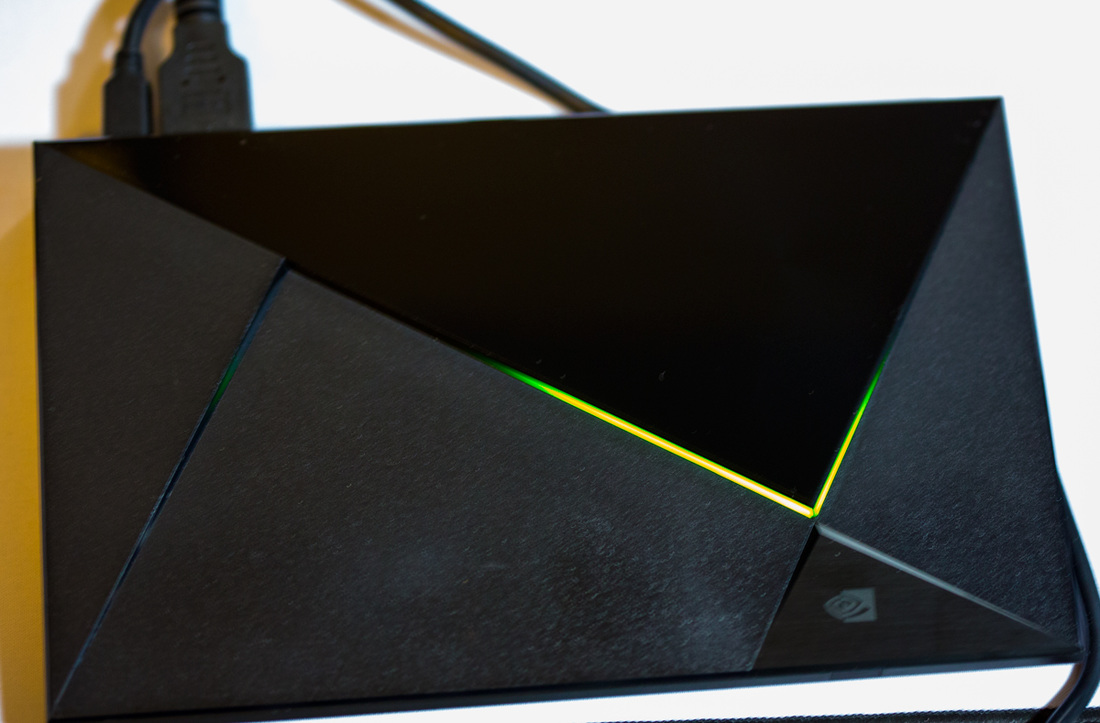

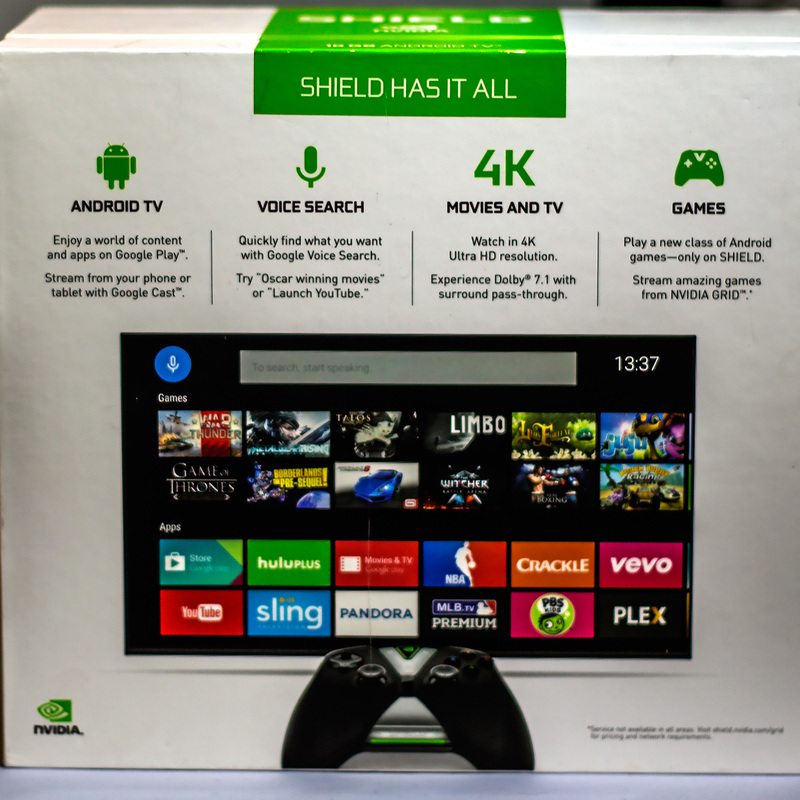
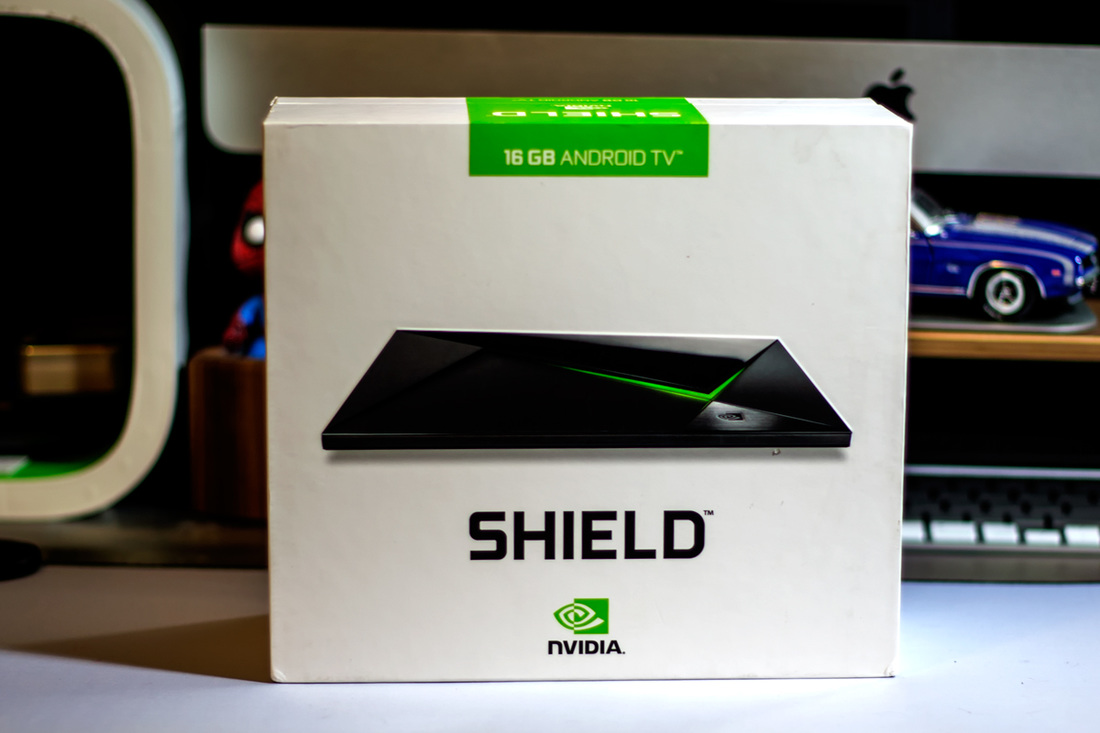
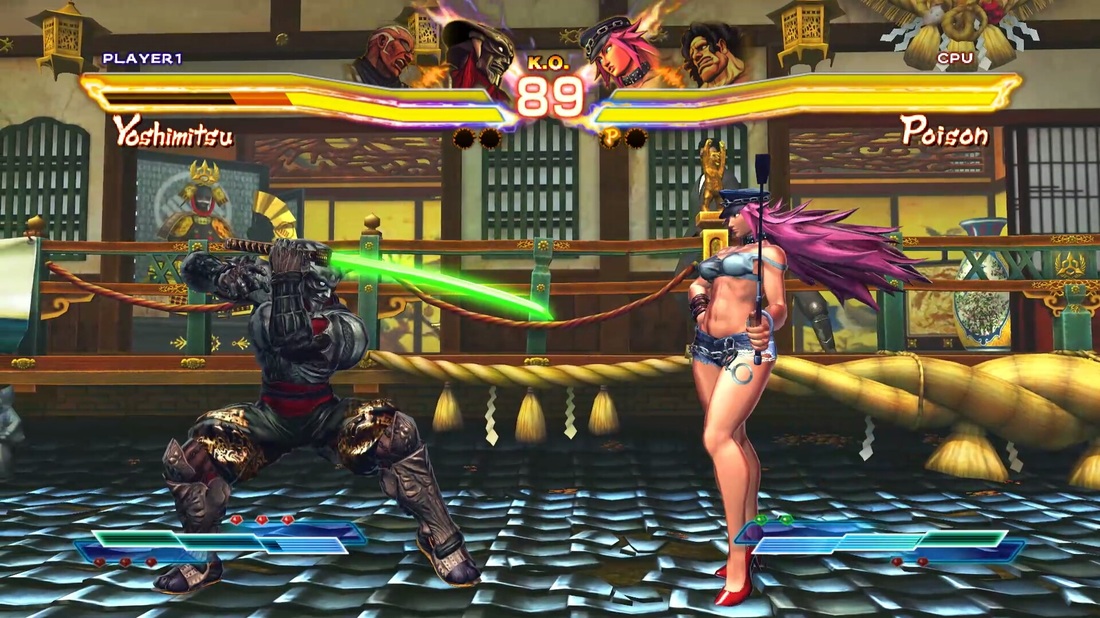

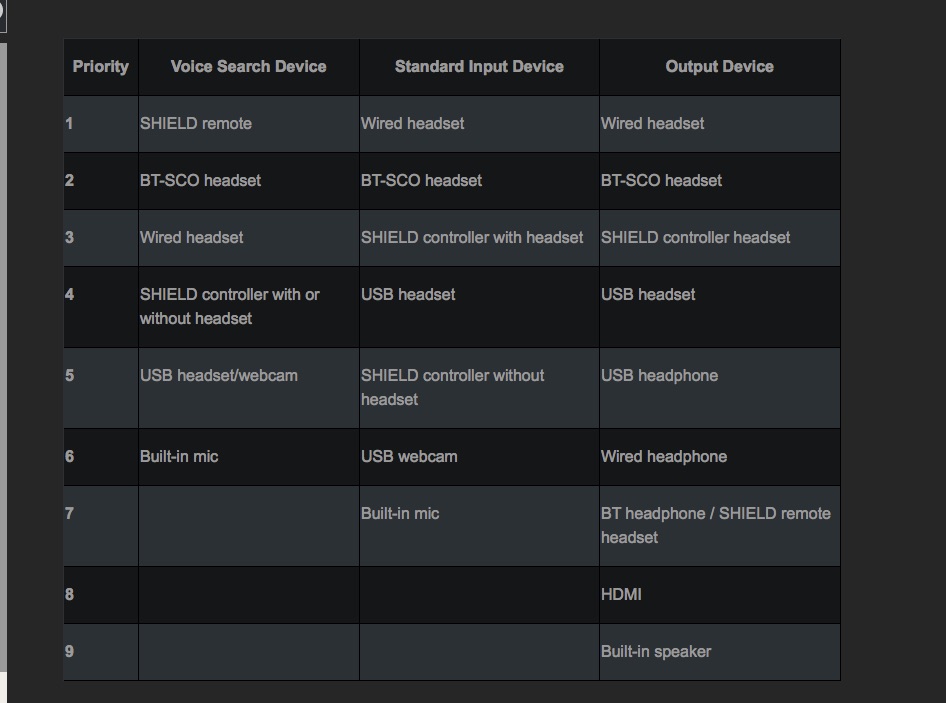
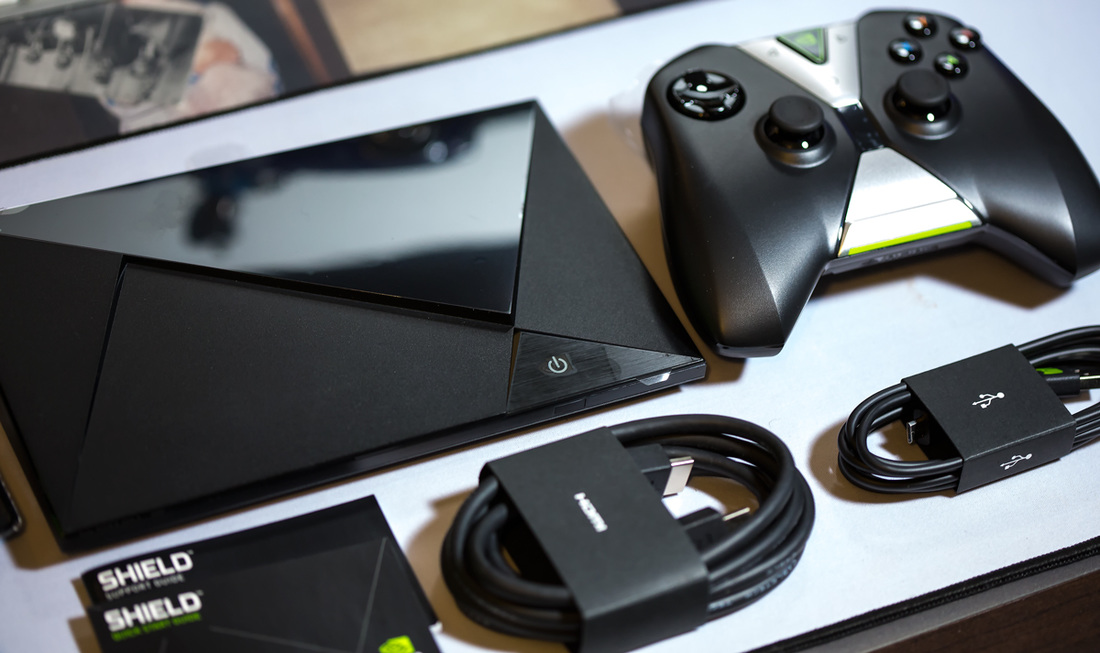
 RSS Feed
RSS Feed